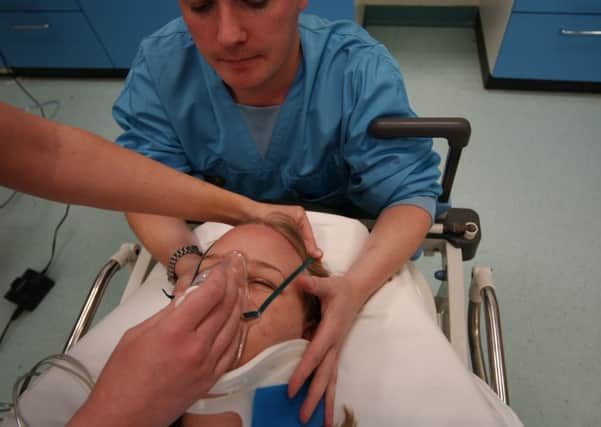Comment: Moving patients is a cause for concern


Their condition will obviously have improved, otherwise they would not face a move, but even so there is always the concern that they could deteriorate again unexpectedly.
For this reason it was worrying this week when an audit of critical care services in Scotland found that last year more than one in ten patients in intensive care units (ICU) or high dependency units (HDU) was moved to another ward during the night – some time after 8pm and before 8am.
Advertisement
Hide AdAdvertisement
Hide AdHospitals are obviously 24-hour facilities and services continue to operate through the night, though often to a lesser extent than during the day. Moving patients between wards in the out-of-hours period has been linked to worse outcomes, never mind the distress that patients may experience at being shunted around the hospital at a time when they would probably have hoped to be asleep.
The audit report, which covered critical care services across Scotland, was published quietly this week, despite the fact there was also a lot of good news in there too.
For a start, mortality rates in critical care are coming down and no units showed any signs of above expected levels of deaths. In addition, performance against a number of other measures has also improved.
There is obviously still some embarrassment over the fact that so many patients are being treated in a way which is not how anyone working in the NHS would want them to be treated.
While more than 11 per cent of patients were moved from critical care to wards at night time, in some units this increased to almost 30 per cent.
Another issue is the number of patients classed as being discharged early from critical care, usually due to another even more seriously ill patient needing their bed.
The problems leading to these situations are not limited to critical care, and often reflect pressures on beds throughout hospitals. For example, a patient may end up being moved to a ward at night because a bed was not available for them earlier in the day.
It is a situation which once again reflects the pressures on health boards to meet rising demands on services due to factors such as the ageing population.
Advertisement
Hide AdAdvertisement
Hide AdIncreasing bed numbers is probably too simplistic a solution. But as we don’t want patients being treated in a way which goes against everything we know about producing the best outcomes, something needs to give.